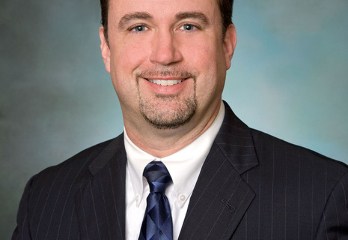The past decade was a fantasyland-come-to-life for supporters of “smart growth.”
The housing boom fizzled. Gasoline prices experienced significant spikes. Alarmism over “climate change” infected the news media, academia, and popular culture. Transit projects maintained their windfall of taxpayer-terrorizing enhancements and expansions. And in states red, blue, and purple, fuel taxes were hiked.
Did these phenomena change our commuting habits?
No.
Brian McKenzie’s “Who Drives to Work? Commuting by Automobile in the United States: 2013” is depressing reading for the car-hating club. Issued by the Census Bureau, the analysis concludes that in “recent years, the percentage of workers who commute by private vehicle remained relatively stable.”
Journeys to the office, store, or factory, McKenzie writes, “make up less than 20 percent of all trips taken, but play an important role within the mix of daily travel by determining peak travel demand across transportation systems.” In 1980, driving alone to work was the norm for 64.4 percent of employees. The figure rose to 73.2 percent in 1990 and 75.7 in 2000. In 2010, solo commuting hit its peak, at 76.6 percent. Three years later, it had plunged to … 76.4 percent.
In contrast, carpooling has been halved. It was the choice of nearly 20 percent of commuters in 1980. In 2013, sharing a ride grabbed 9.4 percent of the work-trip market.
Since the Great Recession, there’s been a tiny uptick in ridership on government-run trains and buses. (Mostly buses.) And bicycling, much to the consternation of drivers victimized by two-wheelers who refuse to obey traffic laws, is rising a bit. But the growth of working at home — i.e., business owners and telecommuters — has been much stronger. On its way to nonexistence in the early 1980s, punching a clock in pajamas climbed back to 4.4 percent in 2013.
To grasp the intensity of Americans’ preference for personal mobility, consider the commutes of those who tell census-takers that they lack access to a private vehicle “of 1-ton capacity or less.” Nearly 21 percent drive alone to work. How can that be? A worker, McKenzie notes, might “use a company car, borrow another person’s car, have a private driver, have a vehicle of more than 1-ton capacity, or use a car-sharing program.”
The country’s largest minority isn’t eschewing auto-mobility. In 2006, 65 percent of Latino workers drove alone to their place of employment. Seven years later, the portion rose to 69 percent. Carpooling’s share fell from 19 percent to 15 percent.
As for Millennials, in April, Bloomberg reported that they “accounted for 27 percent of new car sales in the U.S. last year, up from 18 percent in 2010 … . They’ve zoomed past Gen X to become the second-largest group of new car buyers after their boomer parents. Millennials are starting to find jobs and relocating to the suburbs and smaller cities, where public transport is spotty.”
We’re a suburban nation, and becoming more so. Last year, reality-based land-use scholar Wendell Cox explained a truth that few planners allow themselves to accept: “Many American cities, described commonly as urban cores, are functionally more suburban and exurban, based on urban form, density, and travel behavior characteristics.”
Decades ago, suburbs were bedroom communities. No more. Increasingly, inner- and outer-ring ‘burbs are where the jobs are. When Cox asks audiences to “guess how much of a metropolitan area’s employment” is concentrated in its central business district, responses “of 50 percent to 80 percent are not unusual.” The guesses are off — way off. For metro areas of more than 1 million residents, “the average is 7 percent … and reaches its peak at only 22 percent in New York.”
America’s boomtowns have low population densities. Riding the rails or hopping a bus presents plenty of challenges in Boston, Chicago, or San Francisco. In Houston, Nashville, Orlando, Salt Lake City, Phoenix, Oklahoma City, San Antonio, Charlotte, Las Vegas, or Dallas-Ft. Worth, they are all-but-impossible options.
McKenzie notes that “the rate of automobile commuting has stabilized in recent years after decades of increase.” But trends that can’t go on forever tend not to, and at this point, there is zero evidence of a rush toward subways, bus rapid transit, and light-rail systems. Such a shift would be, literally, un-American.
All the moonbats’ policies and all the moonbats’ propaganda can’t get Joe Sixpack and Jane Latte out of their cars and into “public” transportation. It’s failure on an epic scale. And it cause lovers of freedom and mobility to chuckle a bit, when we don’t consider the price tag.
Former Nevadan D. Dowd Muska ( www.dowdmuska.com) writes about government, economics, and technology. He lives in Corrales, New Mexico. Follow him on Twitter @DowdMuska.





